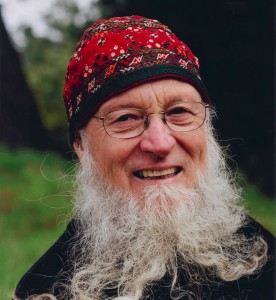In C Performers:
Thank you so much for joining us on this performance! We are so excited for this opportunity to make music with all of you at one of the most spectacular venues in Chicago. Our goal is to create an amazing performance experience for both our musicians and our audience. Many thanks for bringing your time and talents to this unique event.
On this blog post, you will find:
- Printed music for In C. There are performance scores in concert pitch, as well as scores transposed for Eb, F, and Bb instruments. Each copy of the score also has detailed performance directions from Terry Riley.
- A list of events for the performance project, with times and locations.
- A general discussion on performance practice of In C and a few specific directions for our performance together.
- Some instructional videos for In C.
- Video and Audio of a few performances of In C.
Printed Scores
Terry Riley – In C for Eb instruments
Terry Riley – In C for F instruments
Terry Rliey – In C for Bb instruments
Calendar of Events
- June 24, Third Coast Percussion studio
- 6:00-9:00pm
- 4045 N Rockwell St. Chicago, IL 60618
- free street parking
- food provided
- June 25, Pritzker Pavillion
- 3:00pm load-in, call for all performers
- Enter stage from Randolph St., east side of the pavillion
- 4:15-5:00pm soundcheck
- 5:00-6:00pm Stage dark
- 6:30-7:15 Performance
- 7:15-7:30 Change over stage
- 3:00pm load-in, call for all performers
Performance Specifics
Performing directions for In C are included in each copy of the score. Please familiarize yourself with all of the directions from the composer in the score. Additionally, below you’ll find a few specifics and some general ideas to help prepare you for our performance at Pritzker Pavillion:
For this performance, we are shooting for a total duration of 45 min. As you move through the musical material, you should spend around 45-50 seconds on each pattern. The performance tempo will be ca. quarter note = 96 bpm, and pulsing eighth notes will be played by a member of TCP on glockenspiel throughout.
The performance will begin with the glockenspiel playing eighth notes on a concert C pitch. After 5-10 seconds, the entire ensemble will begin entering with the first melodic pattern. Each performer should enter when they feel appropriate and every performer should have entered after 20 seconds.
Listen first, then play 😉 Each individual performer must play strictly within the grid provided by the glockenspiel. However, each performer is free to choose where the “downbeat” of each measure is. Players should feel free to take breaks from playing periodically, but remember that the chronological map of 45-50 seconds per pattern should keep on going whether you are playing or not. If you need to stop to breath, stop. If you don’t need to stop to breath, you should probably still stop from time to time which will add the changes in texture that can create such fantastic performances of the piece.
You should never be more than 2-3 melodic patterns ahead or behind the rest of the ensemble. If you listen around and realize that you are still playing pattern 3 while the rest of the ensemble is somewhere around 19, jump forward to join them. Similarly, if you realize that you are really far ahead of the rest of the ensemble, fade out, wait for the group to catch up to your location, and come back in.
Performers should feel free to add dynamics and articulation to the melodic patterns as they feel appropriate. Listen across the ensemble. If you hear another performer phrasing a pattern in a particular way, try to imitate it. The uniformity of interpretation will highlight the canonic effect of the music. If you hear other performers moving in a particular direction dynamically, try following them. This will bring a unified sound and direction to the ensemble.
Perform each musical pattern in a register you feel appropriate on your instrument. If you like, you can switch registers throughout the piece. Use your instruments’ unique advantages to serve the performance as a whole. For instance, if you play an instrument with a great low register and the ability to sustain, bring out those long tones and help fill out the sound of the ensemble!
If there is a pattern that doesn’t work well on your voice or instrument at the given tempo, you can augment the rhythmic values of the musical pattern (16th notes become eighth notes, eighth notes become quarter notes, etc.). You can also choose to sit out for a pattern if it’s not idiomatic to your voice/instrument. Always make sure that you are keeping track of where you are and the timing of each pattern, even if you aren’t playing it.
The piece will end after all players arrive at no. 53. Once everyone has arrived at this last motive, the entire ensemble with play a long and gradual crescendo and diminuendo, lasting 20-30 seconds total. A member from Third Coast Percussion will cue the beginning of this event. Everyone will then fade out, leaving only pulsing eighth notes in the glockenspiel. The last instrument to be playing, the glockenspiel will fade out and the performance ends.
Instructional Videos
Video / Audio of In C Performances
There are so many recordings of this work, and the diversity of the performances and ensembles is one of the things that makes the music so fantastic and timeless. I like the Bang on a Can All-Stars’ version. There are a few links to performances online below. Dig around yourself and share! If there is a performance that you really love, send us a link and we’ll post it.



